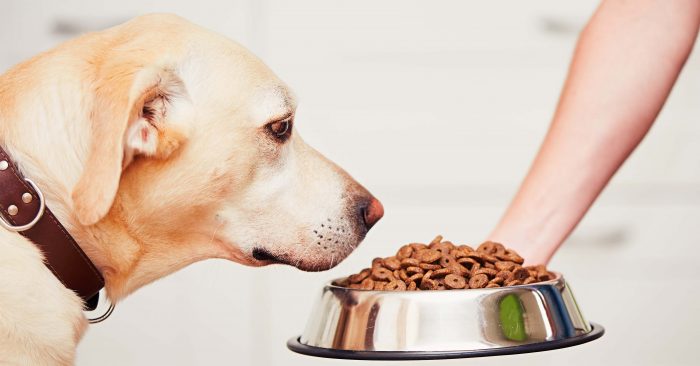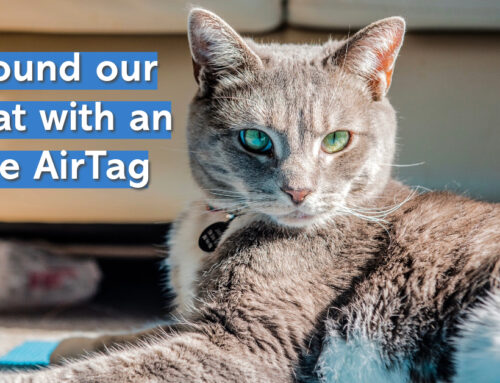The History Of Pet Food
By Nicci Cammack of Thomaston Feed of Cheshire
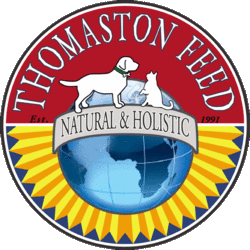
The beginning of pet food as we know it began in the year 1860 with the invention of the “dog biscuit” in England.
A gentleman by the name of James Spratt made this biscuit from vegetables, beef blood, wheat, and beat root. These biscuits became incredible popular, and by 1890 the commercial pet food industry had made it to the United states with other companies making their own version of the dog biscuit.
The History of Commercial pet food, as we know it was born in the 1930’s. Cereal and grain companies were looking for a use for grains, wheat, corn, rice and other grains that failed USDA inspection due to mold, rancidity and other toxic contaminants. The meat and fishing industries were also dealing with a large amount of meat waste products such that humans don’t consume, or that were unfit for human consumption.
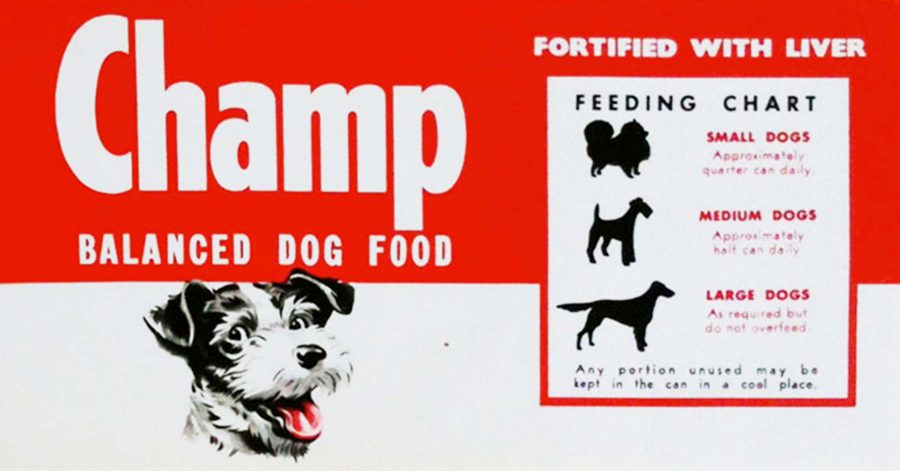
As the economy post WWII began to flourish..
Many well-known companies began adding pet food to their food product lines. Pet food at this time was an excellent way to market by-products that contained heads, hooves, feet, hide, fur, other organs and waste as pet food instead of depositing it into a landfill.
Extrusion, a process of making kibble, was introduced by Purina in the 1950’s. This is a mechanical process which takes heated, liquefied food and pushes it through a machine that would aerate the food before baking it. In order for the extrusion process to work the food would have to have a substantial amount of starch contained within it. Through extrusion, kibble is baked twice and therefore experiences a large amount of vitamin and enzyme loss that manufacturers have to add back, or supplement a large amount of vitamins and minerals to meet minimum nutritional requirements. Sometimes these sources are unnatural and minimally digestible which is a large cause of much of the digestive upset many of our pets’ experience.
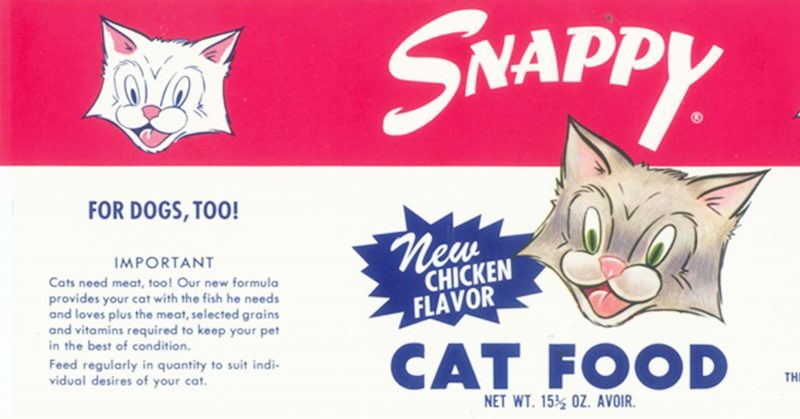
In the mid 1960’s things became interesting.
For hundreds of years prior to commercial pet foods, pet owners fed their pets table scraps which consisted of whole fresh raw or cooked meat, vegetables and fruit. Many pets also foraged on various grasses, roots, berries and prey. Now, an organization called The Pet Food Institute (PFI) began a marketing campaign alerting consumers the dangers of feeding their pets table scraps and instead advocating for feeding processed, dry foods as an “complete and balanced” alternative. This further solidified the pet food industries success built upon grain and meat scraps unfit for human consumption.
Here is where the argument began to evolve to what we commonly hear from big name pet food companies today. Their stance is that every pet should eat a complete and balanced meal containing every essential vitamin, mineral and amino acid in dry form rather than consume all required nutrients over a day or several days’ time through fresh or lesser processed food. The only problem was the many pets did not want to consume the dry processed version of pet food. To combat this problem, manufacturers began coating the food with flavorings, grease and animal fats (which are unstable at room temperature and when exposed to oxygen, but that is a discussion for another day). Now, pets were essentially consuming junk food in order for companies to continue selling by-products and ingredients not fit for human consumption to pet owners for consumption by their pets.

Today and there are dozens of options for both cats and dogs in any given supermarket or big box retailer. The problem is that the majority of these foods are made by the same half-a-dozen-or-so companies with some really amazing marketing programs. Year after year many of these companies are plagued with FDA recalls, claims of sickly pets and a constant flow of pet owners asking the tough questions. However, these brands continually seem to break through these negative points in this multi-billion-dollar industry.
Unfortunately, many consumers are unaware of the better options the market now offers until their pet refuses to eat the grocery store brands – or becomes ill. There are many high quality and affordable options that many Local Family Owned Pet Stores offer that are far more healthful because they are simply made with real food. With ingredients like whole meats, deboned meats, fresh whole vegetables and fruits, probiotics, and natural vitamins without synthetic preservatives, we wonder why there is even such an argument against real food in pet food. There is no such thing has human food, it is all food. How we utilize the different foods for each animals optimal health is what matters.
…Stay tuned for Part II where we explore a little more about pet food offerings from small companies and how to find the best food for your pet.
A little about Nicci Cammack..
Nicci began her career in the sciences in 2006. She studied various human and animal disease through scientific writing, and worked in human pharmaceutical clinical trials for nearly 10 years. Her interest in and passion for animal nutrition began about 10 years ago with a sickly pet of her own. As a result, she met Mark Poveromo Sr., founder of Thomaston Feed, who helped heal her pet and kick start her education in Pet Nutrition. Mark is a highly educated Pet Nutritionist with a true passion for the health, wellness and longevity of our beloved animals. Nicci apprenticed under Mark for several years while pursuing additional college education and certifications in clinical pet nutrition.
Thomaston Feed holds the belief that each animal is an individual with unique nutritional requirements, and works toward helping animals reach peak health and maintain vitality through old age. Nicci is available by appointment at the Cheshire, CT location.
We can't wait to meet you and your pets!
Proudly Servicing Cheshire, Southington, Wallingford, Hamden, Meriden, Bethany, Plantsville and Prospect

